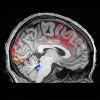
Neurologists have observed reduced neural activity during non-rapid eye movement sleep (NREM). Now MRI imaging during NREM reveals an exchange between brain blood and cerebrospinal fluid that may function to remove neurotoxic waste products.

Neurologists have observed reduced neural activity during non-rapid eye movement sleep (NREM). Now MRI imaging during NREM reveals an exchange between brain blood and cerebrospinal fluid that may function to remove neurotoxic waste products.
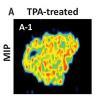
A novel method produces a new class of radioactive tracers that are used for medical imaging. The method allows them to attach radioactive atoms to compounds that have previously been difficult or even impossible to label. The advance will make it easier to track medications in the body and identify tumors and other diseases.
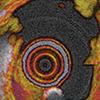
Doctors need better ways to detect and monitor heart disease, the leading cause of death in industrialized countries. Researchers with support from NIBIB has developed an improved optical imaging technique that found differences between potentially life-threatening coronary plaques and those posing less imminent danger for patients with coronary artery disease.

Low-frequency electric stimulation shows promise as a possible alternative to medications for restoring hair growth in people whose hair has begun to thin.
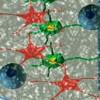
The novel approach better mimics the tumor environment in patients. Made with extracellular matrix (ECM) from pig brains and seeded with tumors from patients, the system is revealing tumor/ECM interactions that aid tumor growth, providing potential targets for new therapies.

Researchers have designed a more precise and versatile genome editing system, named prime editing, that harnesses the power of CRISPR-Cas9 in combination with another protein, reverse transcriptase, to directly edit DNA in human cells.

Mothers and children in low resource communities often suffer from micronutrient deficiencies. Now NIBIB-funded researchers have developed a system that can be used for tests to rapidly identify blood micronutrient levels in remote areas with limited healthcare infrastructure.

The annual awards ceremony at the National Academy of Engineering was highly unusual in that, of the 12 broad engineering categories represented at NAE – from chemical to mechanical and civil to electrical – three 2019 NAE awards were in biomedical engineering.
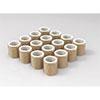
A metamaterial made of plastic and copper may be able to enhance the quality (signal-to-noise ratio) of magnetic resonance imaging (MRI) by four times and speed up scan times by 14 times.

Biography of Gordana Vunjak-Novakovic, Ph.D., a professor of biomedical engineering at Columbia University engineers and builds tissues to improve health and cure disease.